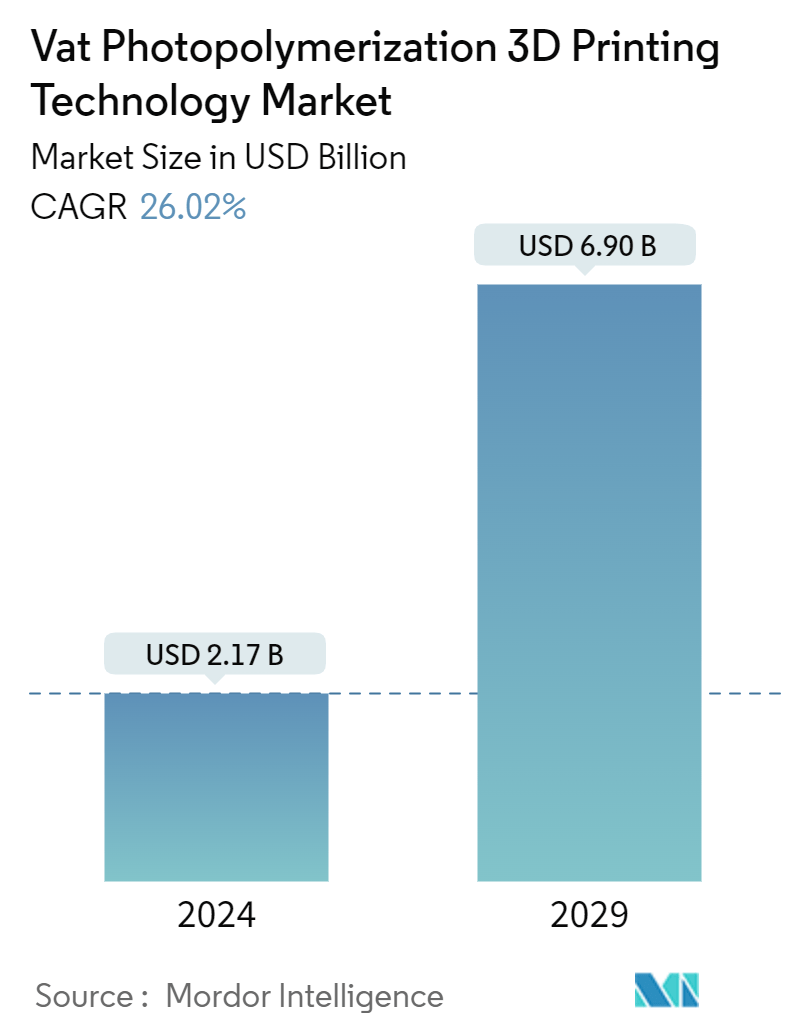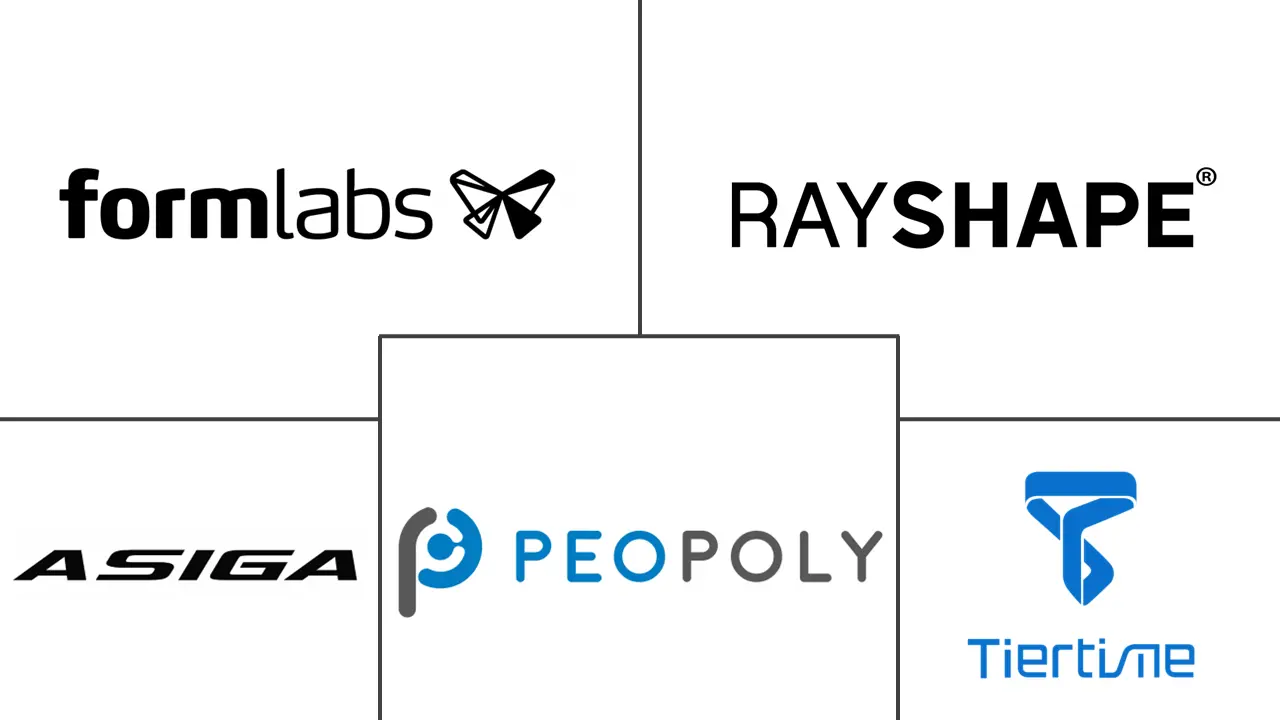Market Size of Vat Photopolymerization 3D Printing Technology Industry

| Study Period | 2019 - 2029 |
| Market Size (2024) | USD 2.17 Billion |
| Market Size (2029) | USD 6.90 Billion |
| CAGR (2024 - 2029) | 26.02 % |
| Fastest Growing Market | Asia Pacific |
| Largest Market | North America |
| Market Concentration | Medium |
Major Players
*Disclaimer: Major Players sorted in no particular order |
Vat Photopolymerization 3D Printing Technology Market Analysis
The Vat Photopolymerization 3D Printing Technology Market size is estimated at USD 2.17 billion in 2024, and is expected to reach USD 6.90 billion by 2029, at a CAGR of 26.02% during the forecast period (2024-2029).
The major factors driving the vat photopolymerization market are the increasing demand for minimally invasive surgeries, growing technological advancements, high cost-efficiency of vat photopolymerization, rising clinical advantages of vat photopolymerization 3D printing in the healthcare industry, and growing regulatory support for 3D printing medical devices.
The increasing demand for invasive procedures boosts the demand for vat photopolymerization 3D printing technologies in healthcare for printing tailored surgical tools and implants according to patient anatomical specifications and reducing surgical complications by providing custom-fitted implants used in minimally invasive surgery. These factors are expected to drive the market studied over the forecast period.
An article published in February 2022 reported that of the population studied in the United States, about 57% of patients preferred MIS and made their decision under the influence of surgeons as their surgeons were more confident in MIS procedures and reported less perceived disadvantages following their surgery compared with the open surgery cohort. Such studies depict the higher acceptance of MIS among healthcare professionals and patients over traditional procedures. Hence, the growing demand for minimally invasive surgical procedures boosts the utilization of vat photopolymerization 3D printing technology to print patient-specific implants, thereby accelerating the market studied over the forecast period.
Furthermore, the growing clinical advantages of vat photopolymerization 3D printing in the healthcare industry are also expected to increase the adoption of these technologies in the healthcare industry and thereby drive the market studied over the forecast period. For instance, according to an article published in the Journal of Functional Biomaterials in January 2024, biofunctional and biocompatible materials can be used in vat photopolymerization (VPP) 3D printing to manufacture pharmaceutical formulations with composition, dosage, and release profiles tailor-made for each individual patient and also for manufacturing prostheses or substituents of different parts of the body in the fields of dentistry, orthopedics, and general or oral and maxillofacial surgery. Hence, the various clinical advantages of VPP 3D printing in healthcare are expected to increase its utilization and drive the market studied over the forecast period.
Thus, the increasing demand for minimally invasive surgeries and growing clinical advantages offered by vat photopolymerization 3D printing in healthcare are expected to boost the demand for this technology and drive the market studied over the forecast period. However, the high cost of installation of VPP 3D printers is expected to restrain the market studied over the forecast period.

